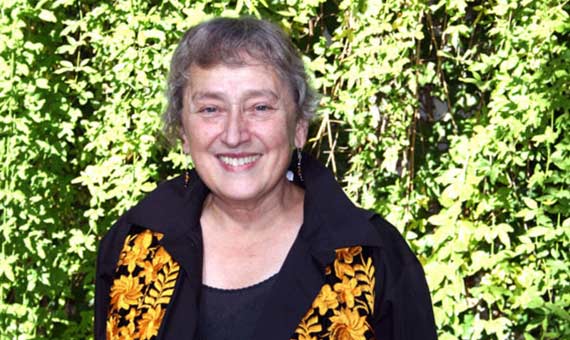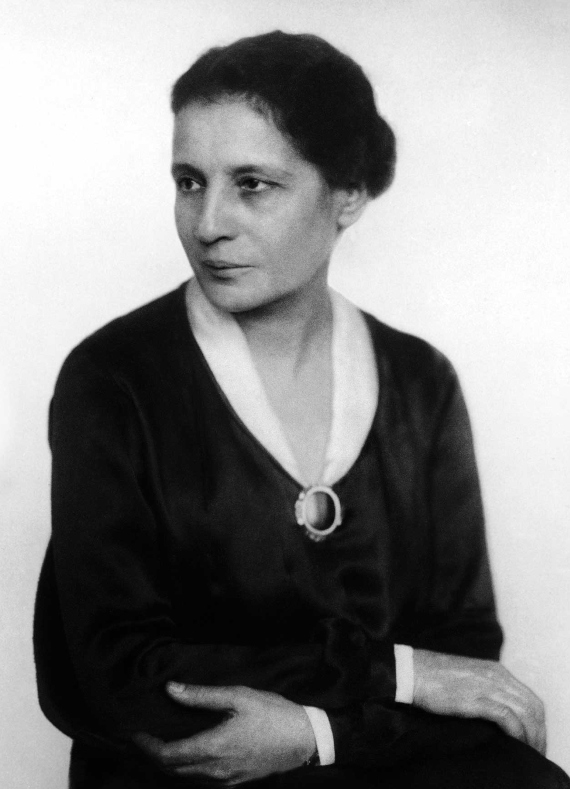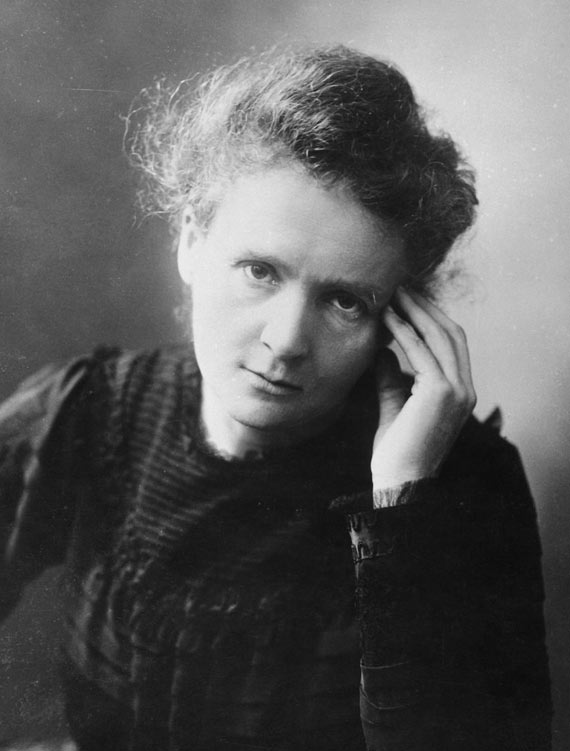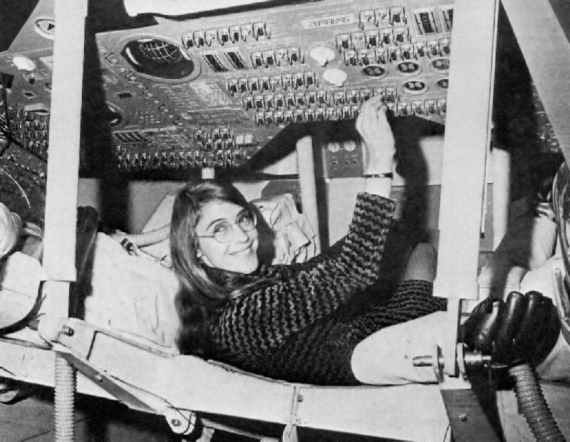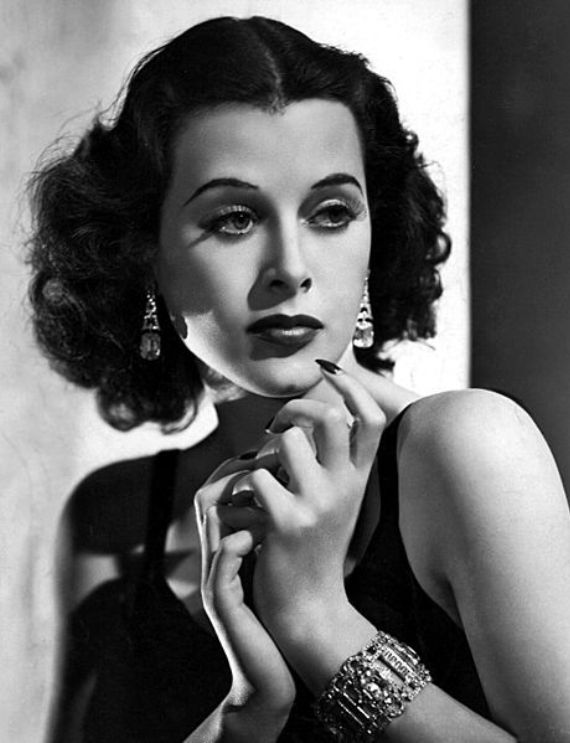Many great scientific and technological advances in history were made possible thanks to amazing women whose merit often went unrecognized. Luckily, we are now learning more and more about the background of these “women in the shadows”. At OpenMind, we selected some of the women who stood out in disciplines like physics, chemistry, mathematics and biology, and whose personal stories are particularly inspiring.
DISCIPLINE1985

Sandra Magro and the importance of ecosystem recovery
Sandra Magro, holds a PhD in ecology and ecosystem restoration, and is the founder of Creando Redes, the first Spanish startup to work on restoring degraded ecosystems and adapting them to climate change.
1986
Rose M. Mutiso, committed to equality and energy efficiency
Rose M. Mutiso is an activist and materials scientist from Kenya. She is co-founder and executive director of The Mawazo Institute and works with experts around the world to find solutions to the energy deficit in developing countries.
XXXX
Angelicque E. White: a look at the depths of the ocean
Angelicque E. White uses old microorganisms as a parameter to assess the health of the ocean, and find a way to renew them at a time when marine temperatures continue to increase. This biologist and professor associated with the University of Hawaii’s Oceanography Department is also the director of the Hawaii Ocean Time-series (HOT) program.
1974
Asmeret Asefaw Berhe: the value of soil in the fight against climate change
Professor Asmeret Asefaw Berhe focuses her research on understanding how disturbances in the environment affect the cycle of essential elements like carbon and nitrogen through the soil system. She obtained her doctorate in biogeochemistry from the University of California, Berkeley, where she discovered how erosion can make the soil store more carbon.
1958
Cheryl L. Holder: medicine’s duty to nature
Cheryl Holder works to increase climate literacy and raise awareness of the impact of climate change on more vulnerable populations. She is a doctor and professor at the Herbert Wertheim College of Medicine where she stands out for her work on HIV and the health impacts of climate change.
1907-1964
Rachel Carson and the origin of scientific ecology
The U.S. biologist Rachel Carson inspired rising concern for the environment in U.S. society where her book Silent Spring, which warned of the effects that the use of pesticides have on ecosystems, became a bestseller.
1819-1888
Eunice Newton Foote, the Forgotten Pioneer of the Greenhouse Effect
Eunice Newton Foote was a pioneer of women’s rights who, for a century and a half, has been forgotten as the scientist who beat Tyndall by three years; the greenhouse effect had a founding mother before it had a founding father. But why was Eunice Foote not acknowledged at the time?
1977
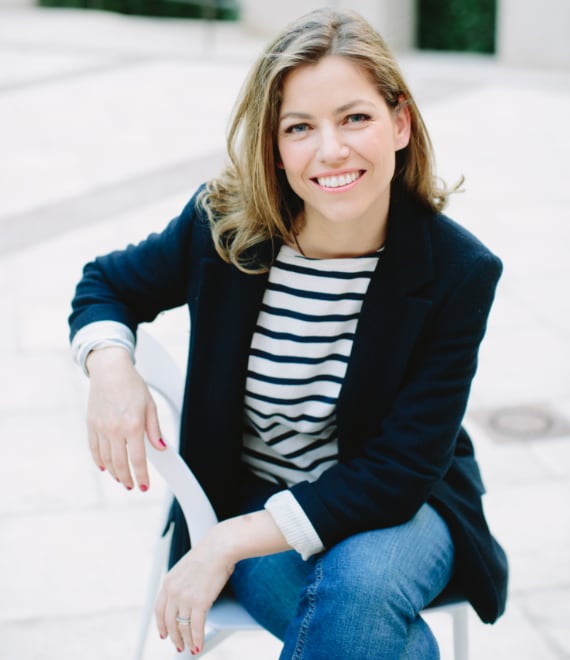
María Mittelbrunn, holding the keys to eternal health
María Mittelbrunn is a leading Spanish scientist specializing in cellular and molecular biology. Her research focuses on cellular aging and the regulation of the immune system, offering important advances to understand and treat diseases related with human health.
1938-2011
Lynn Margulis and eukaryotic cells
Lynn Margulis was a renowned evolutionary biologist, known for her endosymbiotic theory, which suggests that eukaryotic cells evolved through the symbiotic incorporation of prokaryotic bacteria.
1914-2015

Frances Oldham Kelsey, the heroine against thalidomide
Frances Oldham Kelsey was a prominent U.S. pharmacist and physician known for blocking the approval of the medication, thalidomide, setting more rigorous standards for drug safety.
1909-2012
Rita Levi-Montalcini, the neuroscientist who isolated the nerve growth factor
Rita Levi-Montalcini was an Italian neurologist who discovered the first known growth factor in the nervous system - research for which she obtained the Nobel Prize in Physiology or Medicine in 1986, shared with Stanley Cohen.
1821-1910

Elizabeth Blackwell, the first female licensed physician in the U.S.
Elizabeth Blackwell was a British doctor, the first woman to receive a medical degree in the U.S. and the first woman in the General Medical Counsel’s medical register.
1820-1910

Florence Nightingale, the first professional nurse
Florence Nightingale was a nurse, writer and British statistician, considered the forerunner of contemporary, professional nursing, and the creator of the first conceptual model of nursing.
1903-1998
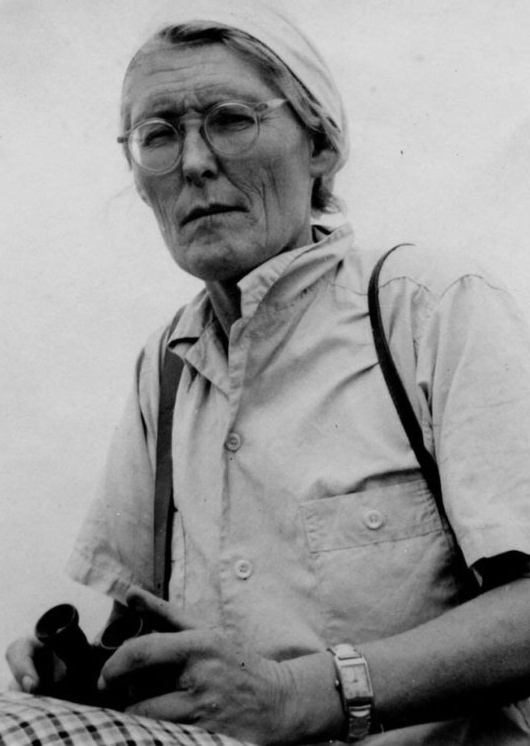
Maria Reiche and the technology behind Nazca Lines
María Reiche Neumann was a Peruvian and German-naturalized archaeologist and mathematician, the greatest scholar of Nazca Lines, which were declared a UNESCO World Heritage Site in 1995.
1882-1935

Emmy Noether and mathematics to understand relativity
Emmy Noether Amalie was a German mathematician of Jewish descent, and an expert in invariant theory and abstract algebra. She was the architect of a theorem that made it possible to understand and solve the problem of energy conservation.
1850-1891

Sofya Kovalevskaya: the woman who covered her room in theorems
Sofya Kovalevskaya was a Russian mathematician known for her contributions to areas like the theory of relativity, celestial mechanics, and function theory, including the solution to the ‘Kovalevskaya equation’, which earned her an honorary doctorate in 1874. In addition, Kovalevskaya was a political activist and defended women’s rights.
1780-1872

Mary Somerville, one of the greatest scientists in history
Mary Fairfax, best known as Mary Somerville, was a Scottish scientist, writer and scholar. Self-educated, she studied mathematics and astronomy, and in 1835 was selected as one of the first women to be an honorary member of the Royal Astronomical Society, together with Caroline Herschel.
1776-1831

Sophie Germain: mathematics by candlelight
Sophie Germain was a great French mathematician known for her work on the vibration theory of solids in which she applied mathematical theories to the comprehension of physical phenomena. She also made important contributions to the numbers theory, including the development of what is known as the ‘Germain inequality’ theory.
1720-1780

María Andresa Casamayor of La Coma, the first female Spanish scientist
María Andresa Casamayor of La Coma was a Spanish mathematician, writer and teacher who stood out for her abilities with numbers and arithmetics - areas that were common for men, but not women at the time. Casamayor was the only woman in science in 18th Century Spain whose work was published.
1718-1799
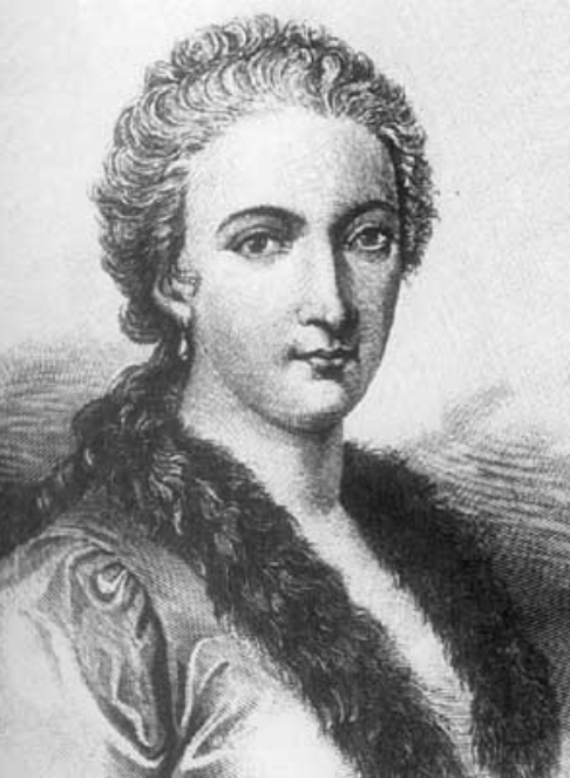
María Gaetana Agnesi, the first female mathematics professor
María Gaetana Agnesi was an Italian mathematician whose most important work, Analytical Institutions, was translated to several languages and used to learn mathematics for more than 50 years in many countries in Europe. In it, she covered topics as new at the time as differential and integral calculus.
1906-1972
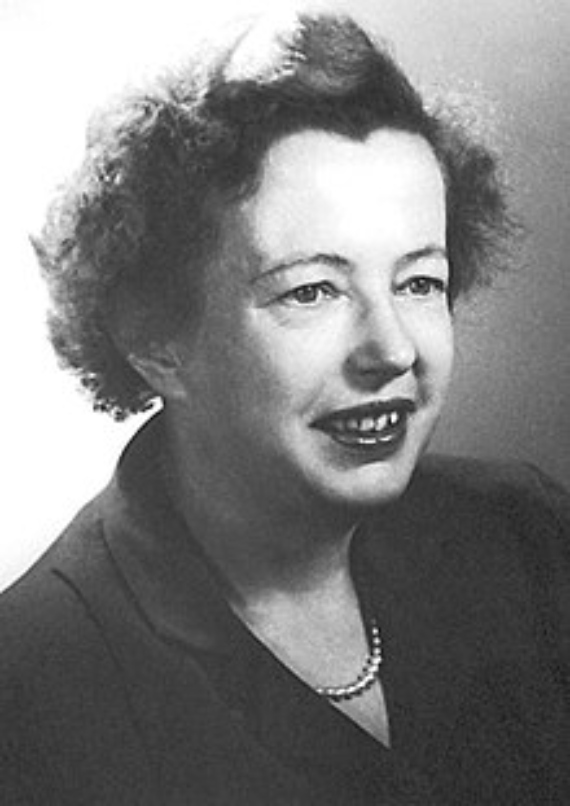
Maria Goeppert-Mayer, the woman who reached the heart of the atom
Maria Goeppert-Mayer was a U.S. theoretical physicist, originally from Poland. She won the Nobel Prize in Physics in 1963 for proposing the nuclear layer model, making her the third woman to win this award in physics, following Irene Curie.
1878-1968
Lise Meitner and nuclear fission
The Austrian physicist Lise Meitner is the most obvious case of a scientific discovery that was made by a woman and ignored by the Nobel Prize committee. In 1938, she realized that nuclear fission had occurred in experiments carried out by her colleagues in the laboratory.
1910-1994

Dorothy Hodgkin, the first British woman to receive a Nobel Prize in science
Dorothy Hodgkin was a British chemist who developed protein crystallography, for which she received the Nobel Prize in Chemistry in 1964. She proposed advances in the x-ray crystallography technique, a method used to identify three dimensional structures of crystals.
1881-1975

Alice Catherine Evans, the pioneer of safe milk
Alice Evans discovered that B. abortus was usually present in raw milk, going against the prevailing idea that this product was safe. Her proclamation that normal raw milk could cause illness in humans and that this risk was eliminated through pasteurization, was received with disbelief by scientists, doctors and veterinarians. However, her work was confirmed by other experts and the recognition of her thesis led to the promotion of milk pasteurization starting in the 1930s.
1867-1934
Marie Curie, the first woman with two Nobel Prizes
Maria Salomea Skłodowska-Curie, best known as Marie Curie or Madame Curie, was a Polish and naturalized-French physicist and chemist. She was a pioneer in the radioactivity field and was the first person to receive two Nobel Prizes in different fields: physics and chemistry.
1706-1749

Émilie du Châtelet, mathematician, physicist and philosopher
The Marchioness of Châtelet, born as Gabrielle Émilie Le Tonnelier de Breteuil, was a French mathematician, physicist and philosopher. She also translated Newton to French and disseminated his theories. Du Châtelet was the first woman to have her work published by the French Academy.
1799-1847

Mary Anning, the first female paleontologist
Mary Anning was the first female paleontologist recognized as such, and a fossil collector and merchant. She discovered the first plesiosaurus and the first pterosaurus outside of Germany, findings that led her to be defined as “the greatest fossilist the world has ever known.”
1955
Joanne Chory: plants to stop global warming
U.S. botanist and geneticist Joanne Chory is a professor and the director of Plant Molecular and Cellular Biology Laboratory at the Salk and Howard Hughes institutes. She and her team aim to help plants develop larger, more robust root systems that can absorb more carbon.
1934
Jane Goodall, the human voice of chimpanzees
Her passion for animals led her to quit her job and abandon her life in Europe to follow her passion of traveling to Africa and living among the animals. Five years after setting foot in Gombe for the first time, Goodall went from lacking a formal education to obtaining a doctorate from the University of Cambridge.
1925-2014

Mary Lyon: the geneticist who discovered that women are cellular mosaics
Mary Frances Lyon was a British geneticist who graduated from the University of Cambridge in 1946 and received her doctorate in 1948. In Edinburg, she studied the risks of mutations from radiation through mutagenesis experiments in mice.
1919-2009
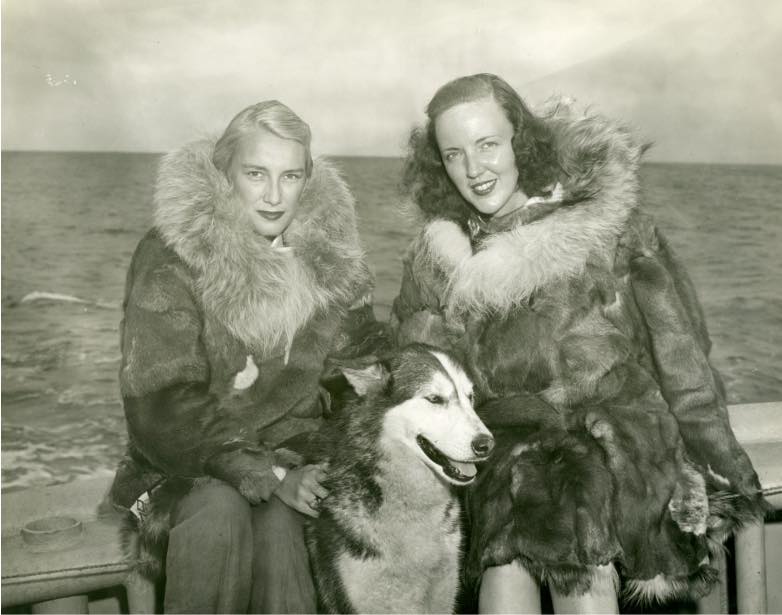
Jackie Ronne,the first female explorer of Antarctica
Jackie Ronne challenged traditional gender roles in polar explorations, accompanying her husband, Finn Ronne, in the “Ronne Antarctic Expedition”. She therefore paved the way for future generations of women in scientific research and exploration.
1918-1997

Ruth Sager, a genetics pioneer on two occasions
Ruth Sager was a U.S. biologist who stands out as a pioneer of genetics in two ways: during the early decades of her career she researched the genes inside cell nuclei, while in a second stage she delved into the genetic mechanisms of breast cancer.
1916-2005

Ángeles Alvariño, a pioneer in oceanography and the driving force behind female science
Ángeles Alvariño was a Galician oceanographer who dedicated her career to researching the oceans and their impact on climate and the environment. Even though she was part of internationally renowned institutions, Alvariño continues to be largely unknown in her home country.
1907-2004
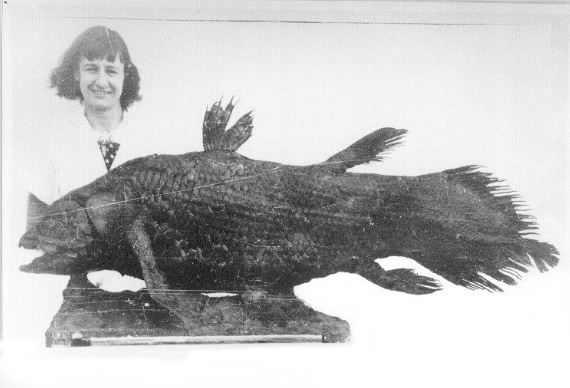
Marjorie Courtenay-Latimer, the woman who brought a fish back to life
Marjorie Courtenay-Latimer discovered the first known specimen of coelacanth, a prehistoric fish that was considered extinct millions of years ago. Its discovery in 1938 at a pier in South Africa led to the global rediscovery of this species. It had a significant impact on the understanding of evolution and marine biodiversity.
1861-1912
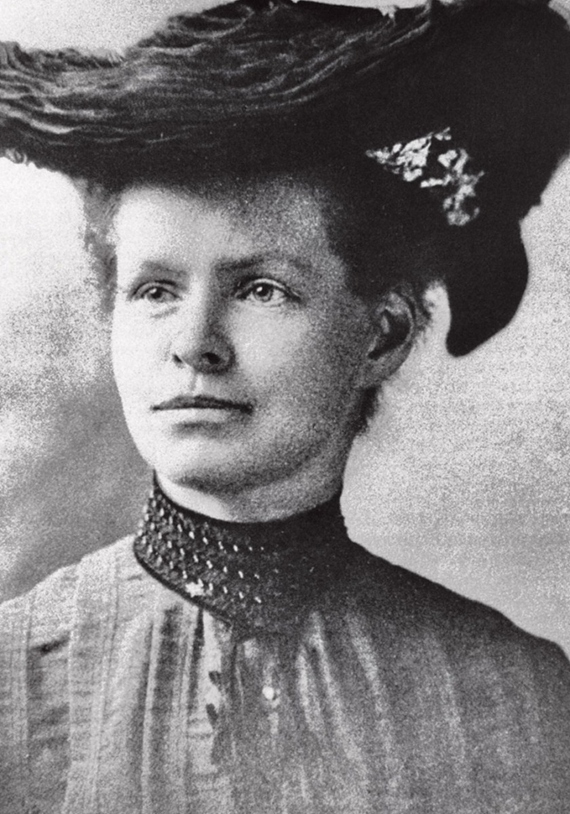
Nettie Maria Stevens, the woman who discovered that sex is determined by chromosomes
The U.S. geneticist Nettie Maria was the first researcher to discover the chromosomal basis that determines sex. She successfully expanded the fields of embryology and cytogenetics.
1850 - 1934

Fanny Hesse, the mother of bacterial cultures
Fanny Hesse is known for her contribution to the development of bacterial culture techniques and is considered a pioneer in the microbiology field. Her bacterial culture technique allowed for additional research in the microbiology field and had a major impact on medicine and biotechnology.
1647-1717

Maria Sibylla Merian, the woman who turned science into art
Maria Sibylla Merian was a pioneering German scientist in entomology, a naturalist, an explorer, a scientific illustrator and a painter. Her career as a respected naturalist began with the 1679 publication of The Wondrous Transformation of Caterpillars, the product of many years of observation and research.
1928-2016
Vera Rubin and dark matter
Vera Rubin was the only woman to graduate with an astronomy degree from Vassar College in 1948. She found the first evidence of the existence of dark matter.
1857–1911

Williamina Fleming, from maid to astronomer
Williamina Fleming was a U.S. astronomer of British origin. She was originally hired as an assistant at the Harvard observatory. Although she did not have any specific training in astronomy, she made numerous discoveries of stellar bodies, making a significant contribution to the Henry Draper Catalogue of stellar spectra.
1818-1889

Maria Mitchell, a life dedicated to science and the fight for womens’ rights
Maria Mitchell was an astronomer, librarian, naturalist and educator from the U.S. In 1847, she discovered a comet called 1847 VI, which was later known as Miss Mitchell's Comet in her honor. She earned a gold medal for her discovery, presented by King Christian VIII of Denmark in 1848.
1750-1848

Caroline Herschel, the first woman to discover a comet
Carolina Lucrecia Herschel was a German astronomer. She was the first woman to receive a pension from the British Crown as a scientist, the first to see her work published by the Royal Society, and the first to discover a comet, in addition to numerous groups of stars and nebulae. She never learned to multiply, so she always carried a cheat sheet with the multiplication tables in her pocket.
1937

Valentina Tereshkova: from space to the Kremlin
Russian astronaut, engineer and politician, Tereshkova became a legend as the first women to drive a spaceship. Following her space career, she received a doctorate degree as an engineer and became a member of the Central Committee of the Communist Party. Today she remains active in political life and regularly attends the Duma, Russia’s Federal Assembly.
1936
Margaret Hamilton and the Arrival to the Moon
Margaret Hamilton, computer scientist, mathematician and software engineer, was the director of the Software Engineering Division at MIT’s Instrumentation Laboratory. There, together with her team, she developed the on-board navigation software for the Apollo Space Program.
1914-2000
Hedy Lamarr: inventor of wireless, actress and spy
Hedwig Eva Maria Kiesler, known as Hedy Lamarr, was an Austrian movie actress and inventor. She and George Antheil were co-inventors of the first version of spread spectrum, which would enable wireless communications at far distances.
1900-1995

Mária Telkes, the queen of solar energy
Mária Telkes was the inventor of the first thermoelectric generator, but she mainly stood out for being a pioneer in the development of solar technology. She dedicated her work to designing a heating system for homes that used clean solar energy instead of fossil fuels.
1898-1979

Katharine Burr Blodgett and anti-glare glass
A pioneering physicist and inventor in surface engineering and chemistry, Katherine Burr Blodgett was the first woman to receive her doctorate in Physics from the University of Cambridge in 1926.
1835-1914

Amanda Jones, poet and inventor
Amanda Jones developed the Jones process to preserve food in 1872. She came up with the idea for a vacuum-packed method that was improved with successive patents until fruit, vegetables and meat could be consumed for much longer than usual.
1815-1852

Ada Lovelace: the first female programmer in history?
Ada Lovelace, the only legitimate daughter of poet Lord Byron, was a brilliant enthusiast of mathematics who anticipated computers’ enormous potential at a time when only the first mechanical calculators had been created. However, despite the undeniable value of her contributions, the common idea that she was the author of the first computer program in history is just a myth.







